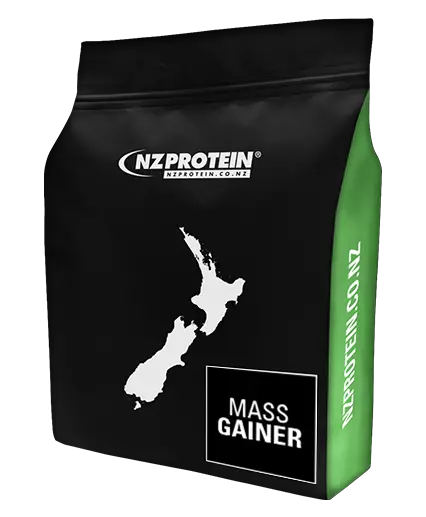
You know those people who, no matter how hard they train or eat, just can’t seem to put on muscle? They tend to have long limbs, a “quick metabolism” and are colloquially known as “hard gainers”. Although it’s true that genetics significantly influence your body composition, this doesn’t mean you’re doomed to be lanky forever. Even hard gainers can put on size provided they follow the right nutrition and training plan. If you or someone you know is struggling to put on size, read below. You’ll learn all about hard gainers and how they should eat and train for optimal muscle growth.
How To Train For Muscle Gain
As the saying goes, “train insane or remain the same”. Don’t expect to get big if you’re taking it easy while training or only working out once per week. Regardless of body type, research shows that in order to put on muscle, you must focus on lifting weights often and achieving progressive overload. Progressive overload means lifting heavier weights or doing more reps over time. For example, if you bench press 30kg for 10 reps on your first ever gym session, you shouldn’t be still using that same weight four weeks later. As time goes on, your training volume needs to increase. If it doesn’t, your strength and physique won’t change a bit. Get on a professional training program that includes a variety of compound exercises (squats, deadlifts, bench presses) and stick to it like glue. Although it is possible to build muscle by doing only three sessions a week, hard gainers would benefit more from at least five or six. They should limit excessive cardio, lift those weights and lift them often. If you notice you’re able to pump out more reps with ease over time, then you’re doing progressive overload right.

Eat More Calories
Insufficient calorie intake is one of the biggest mistakes hard gainers make. They might think they eat a lot of food but their small frame tells a different story. The bottom line is that, if you want to put on size, you need to consume more calories than you burn. If the scales haven’t changed, it’s the nutrition that needs to. Hard gainers should start by tracking their food using an app or some old school pen and paper. This gives a visual representation of one’s dietary habits. Once they’ve got a rough idea of current food intake, they can slowly increase calories week by week. This could be done by sneaking in snacks between meals or adding extra fruit and scoops of protein to a daily shake. Studies show that increasing your meal frequency can also lead to an increase in body weight. Hard gainers should eat more meals, more often. For those who really struggle to get those calories in, a mass gainer supplement might be appropriate. This is essentially protein powder with added carbohydrates to increase the calorie content and replenish those damaged muscles. It’s a convenient way to get nutrients in without having to spend hours in the kitchen prepping meals.
Just Enough Protein
Protein is vital if you intend to put on muscle but there is a sweet spot. Too much protein will fill you up and blunt your appetite. This is one of the biggest hurdles hard gainers have to overcome. They need enough protein to build new muscle tissue but not so much that they feel stuffed. Studies show the ideal amount is around 1.6g protein per kg of body weight. So 160g of protein a day for a hundred kilo person. This is less than what would be recommended for the average gym goer who doesn’t have an issue with putting on size. Just because hard gainers don’t need to go overboard on the protein, doesn’t mean they can neglect their intake. It’s best practice to ensure that all meals are based around a decent protein source. This could be a basic chicken, rice and vegetable dish or something fancier like steak, chips and creamy mushroom sauce. Meats with a higher fat content will be more conducive to hitting a higher calorie goal so opt for things like T-Bone steaks and pork rather than lean fish. Protein is an invaluable nutrient when it comes to muscle gain but hard gainers should be careful not to go overboard if it makes them feel too full to finish their meal.

Track Progress
Finally, the importance of tracking your progress can’t be emphasised enough. What gets measured really does get managed. The only way to know if your nutrition and training protocol is effective is to keep an eye on a few different metrics. Bodyweight, calorie intake and body circumference measurements are good ones for hard gainers to monitor. If their weight on the scale goes up, they are clearly hitting their calorie goal. Body circumference measurements and progress photos will also reveal whether there has been an improvement in muscle mass. Psychologists attest to the fact that people who monitor their progress are statistically more likely to achieve their goals. So even if it seems arduous to weigh yourself and keep a daily food diary, do it anyway. Those little habits will be well worth it when you achieve your strength and physique goals.
Conclusion
Being a hard gainer isn’t the end of the world. Some people would kill to have a naturally lean physique and not gain weight after just looking at a cake. Rather than blaming genetics for a lack of muscle, hard gainers should implement an evidence based training and nutrition program to achieve those body composition goals. All it takes is a bit more progressive overload, calories, protein, and patience. Trust the process and soon enough, the gains will come.
Written by Lauren Carruthers.
